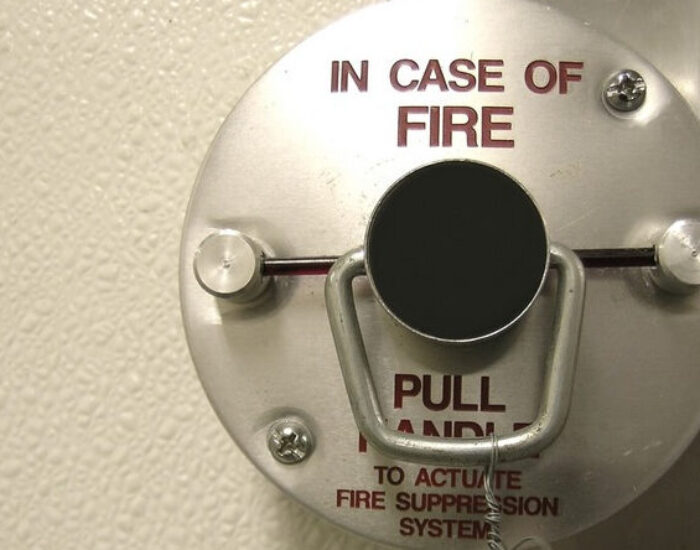Fire safety in a school is one of the most important ways that we as a society have to educate the masses about the importance of prevention and mitigation in a fire-related emergency. By having proper fire safety policies and procedures in place, we ensure that every child, teacher, and additional staff members are safe and protected and will continue to be protected in the future.
According to FEMA, around 4,000 school fires are reported to fire departments across the United States each year and cause $66.1 million in property loss and around 75 injuries. Luckily, fire-related fatalities in schools are very rare, likely due to the mitigation efforts and strict fire codes in every state.
Intentionally starting fires was the number one cause of school-related fires, making up 40% of the total fires in schools reported. The most frequent origination point for school fires was the bathroom at 25%. And probably the most surprising statistic in this report is that smoke alarms were only present in 66% of nonconfined school fires.
We’d say that most schools have pretty strong fire safety equipment and procedures in place, but there are certainly some outliers. Nevertheless, fire safety and prevention must always be top of mind. There are many things that can be done in a school, but these 5 should never be left off of your school fire safety and prevention checklist.
The Top 5 Most Important Items for School Fire Safety and Prevention Checklists
1. Under the Radar Fire Hazards
There are many things to look out for surveying the school grounds for potential fire hazards. To start, make sure that all of the property’s landscaping is kept cut and any loose debris like branches is taken care of in a timely manner. Trash cans and receptacles should always be kept away from the actual building itself. Highly-visible exterior lighting with motion sensors can help to thwart would-be arsonists from starting a fire in the first place. And lastly, it’s a good idea to ensure frequent checks on entry points like doors, windows, and roof access points to prevent unauthorized access
2. Fire Safety Education
There are still many kid-friendly educational resources available for educators to help spread fire safety awareness. Fire drills, both scheduled and unexpected, should be conducted on a monthly basis to ensure quick evacuation practice should the need ever arise. Assemblies should be held twice during a school year to go over proper safety procedures, remind students and staff members about all available exit points, and refresh everyone on where the designated meeting spot is on the school grounds.
Additionally, every classroom should have a map of the entire school that shows their current location per class along with directions on how to evacuate.
3. Regularly Inspected and Maintained Fire Safety Equipment
This includes timely inspection and certification of all fire extinguishers and fire safety systems in accordance with local and state laws. Sprinkler systems need to be checked for potential metal corrosion, leaks, and any other damage or wear that could potentially prevent them from working in an emergency. And in addition to the aforementioned fire drills, alarm systems need to be checked regularly to assess and repair any damage from tampering.
4. Clear and Easy Access Through All Trafficked Areas
Especially important in older schools, there should always be clear and easy access through hallways, from classrooms, and staffing offices. Make sure that exit signs are above all appropriate doorways are well lit and unobstructed. Additionally, never place locks or chains on any exit point that would prevent school occupants from exiting in the event of an emergency.
5. Kitchen and Cafeteria
This location in every school is one of the most active places with students and staff being in both throughout the day. Make sure that appropriate Class K fire extinguishers are present in the event of a grease or oil fire in the kitchen. Ventilation systems should be frequently cleaned, especially those that aid in heat reduction. Avoid leaving spills to linger for too long by performing quick cleanups as soon as they occur. And lastly, make sure that all kitchen staff is aware of any special procedures for disposing of waste including food or packaging so that trash accumulation is kept to a minimum and disposed of promptly.
Fire Safety Is a Team Effort
There are many factors that go into preventing fire-related emergencies within our schools. As such, it’s incredibly important to practice fire safety measures such as drills and prevention assemblies on a frequent basis, preferably monthly. While fatalities from school fires are low, it only takes one fire to change that. The responsibility of fire safety rests on everyone’s shoulders — always remind every student and staff member to do their part in preventing fire-related emergencies.
Because when everyone’s on board, fire doesn’t stand a chance. Contact WFX for a consultation if you need guidance on educational building safety.





